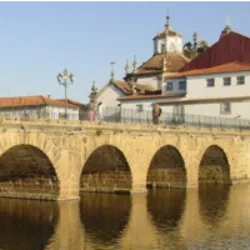Curiosities and Challenges about Portuguese Folklore
Do you like Portuguese Folklore?
Would you like to see more curiosities like these..
The legend of the Moura da Ponte de Chaves tells the story of a young Moorish woman in the 12th century, engaged to her....
The oldest origin of Halloween dates back to the Celts, a people who inhabited areas of Ireland, Scotland and Northern..
The first legend of the Lady with the Crow's Feet originates from Beira Alta, in the village of Marialva. She lived in....
So.. How about a Challenge on the Best Quiz Platform in the World?
Here we find the richness of tradition
Get to know a little about everything and bet on your knowledge in incredible challenges and duels..
Join the betspot.zone community, accumulate bts (bets) and even compete for prizes..
Discover some interesting facts about Portuguese Folklore..
legends Quiz - legends Curiosities - legends Challenge - portugal Quiz - portugal Curiosities - portugal Challenge - culture Quiz - culture Curiosities -culture Challenge - songs Quiz - songs Curiosities - songs Challenge - - Frequently asked questions about Portuguese Folklore
Magusto is a festival between October and November

Magusto is a festival between October and November, associated with dates such as Saint Simon's Day, All Saints' Day and Saint Martin's Day. It is celebrated around bonfires, roasting chestnuts with jeropiga, açaí or new wine. The brave jump over the bonfire, and "filling" it with ashes is part of the tradition. Despite the rain in autumn, "Saint Martin's summer" brings sunshine. The legend of Saint Martin, related to a rainy day, explains this phenomenon. A specific tradition, the "Magusto da Velha", takes place in Aldeia de Viçosa on December 26, honoring a rich old woman with the throwing of chestnuts from the bell tower and prayers. The event in Barqueiros, Mesão Frio, connects magusto to ancient rituals in honor of the dead.
publicity
The marafona, also called matrafona in Alentejo

The marafona, also called matrafona in Alentejo, is a rag doll dressed in colorful regional costumes. These dolls play a significant role in local celebrations, such as the Festa das Cruzes in Monsanto, where single women dance with the marafonas. After the party, the dolls are placed on the beds to protect the house from storms and the evil eye. At weddings, they are kept under the bed to bring fertility and happiness to the couple. Marafonas are also an important part of the Caretos de Podence festival, in which a marafona is a masked woman. There is a legend that these dolls were used to trick the Moors during a siege at Monsanto. They also parade at the Torres Vedras Carnival.
Manuel, a brave soldier from Belmonte

Manuel, a brave soldier from Belmonte, was captured by the Muslims and became a slave in Algiers. Despite the years of captivity, Manuel never lost hope of returning to his homeland and seeing the Virgin of Hope. When he explained its meaning to a Moor, his work became more arduous. However, the Virgin of Hope intervened, causing the ark where Manuel slept to take flight and disappear towards the sea, leaving all the Moors astonished.
At the beginning of the 20th century, in Baixo Alentejo

At the beginning of the 20th century, in Baixo Alentejo, there is a legend about a seamstress who, due to her sins or unfulfilled promises in life, was condemned to wander among the living as a banshee after her death. Different versions explain his supernatural actions, such as sewing at night, the sound of the sewing machine, scissors and thimble. However, the little seamstress was not a frightening figure for the people of Alentejo, as she was a familiar figure in the region. The legend continues to endure, and the question that persists is whether the little seamstress is still present today.
publicity
Many years ago on the island of Terceira, in the Azores

Many years ago on the island of Terceira, in the Azores, a young noblewoman was forced to marry a man her father had chosen. However, her heart belonged to a house slave. Despite the conventions of the time prohibiting such love, the two secretly fell in love. When the husband found out, he had the slave arrested. He fled through the hills, but when he found himself cornered, his tears of sadness gave rise to a lake. Pursued by hunting horses, the slave jumped into the lake and drowned. The lagoon became known as the "Lagoa do Negro" and is located on the island of Terceira, in the Azores.
In this Cascais legend

In this Cascais legend, there was a castle inhabited by a malevolent sorcerer (or giant). The sorcerer chose the most beautiful maiden in the region to marry, but when he saw her in person and was rejected, he locked her in a tower near the sea. He hired a knight to guard it. Years passed, and the knight and the maiden fell in love, deciding to run away together. The sorcerer, furious, summoned a storm that opened rocks on the coast, swallowing the lovers into the sea. The resulting hole became known as the "Boca do Inferno" due to the tragedy. On stormy days, they say the place seems to mourn the lovers' unhappy story.
Local legend says that D

Local legend says that D. Garcia, the mayor of Penha Garcia Castle, had courted D. Branca, daughter of the governor of Monsanto. On a stormy night, D. Garcia kidnapped her from her father's house. The governor ordered his soldiers to look for D. Garcia and bring justice. After months of pursuit, D. Garcia was finally captured on the slopes of the mountain. Despite the death penalty common at the time for such crimes, the governor, responding to his daughter's pleas, spared D. Garcia's life, but ordered the amputation of his left arm as punishment. Legend has it that the ghost of D. Garcia, the severed one, is seen on stormy nights, watching over Monsanto hill from the towers of Penha Garcia.
publicity
In the city of Barcelos, Portugal

In the city of Barcelos, Portugal, there was concern due to an unsolved crime. A Galician suspect, who was passing through on a pilgrimage to Santiago de Compostela, was arrested and sentenced to death on the gallows. He swore his innocence and asked to be taken to the judge who sentenced him. The desperate Galician said that his innocence was as certain as the rooster on the judge's table would crow when he was hanged. Everyone laughed at the statement, but no one touched the rooster. Surprisingly, when the Galician was about to be hanged, the rooster on the table crowed. The judge rushed to the gallows and discovered that the Galician was alive due to a poorly tied knot in the rope. He was released, and the case was closed. Years later, the Galician returned to Barcelos and sculpted the Monument of Senhor do Galo in honor of the Virgin Mary and Santiago Maior. The Rooster of Barcelos has become a popular symbol, representing justice and innocence in Portugal.
Ilha dos Amores, in Castelo de Paiva

Ilha dos Amores, in Castelo de Paiva, is the scene of a legend of forbidden love. It tells the story of a young farmer and a noblewoman who met in secret due to the opposition of the noblewoman's father. When she was proposed to by a nobleman, the farmer, fearing to lose her, committed murder. After the crime, the couple tried to escape to the island, but a storm sank the vessel, suggesting the revenge of the spirit of the dead nobleman. The island was once a place of worship in the Middle Ages, with ruins of a chapel dedicated to Saint Peter.
The legend of D

The legend of D. Pedro and Inês de Castro is a tragic love story that took place in Portugal. D. Pedro was married to D. Constança, but fell in love with D. Inês de Castro, an ayah. After the death of D. Constança, D. Pedro and D. Inês decided to accept their relationship, which displeased D. Pedro's father. However, they had children together. Court intrigues led to the death of D. Inês, with tears shed in the Mondego River, where the Fonte das Lágrimas is believed to have appeared in Quinta das Lágrimas. Some reddish algae in the river are associated with her blood. D. Pedro, upon discovering D. Inês' murderers, ordered them to rip out their hearts as revenge.
publicity
In the second version of the crowfoot lady legend

In the second version of the crowfoot lady legend, a nobleman falls in love with a beautiful woman he meets in the forest while hunting. They marry on the condition that he never makes the sign of the cross again. Years later, during a dinner, one of the couple's dogs kills the other in a fight over food. Shocked, the nobleman makes the sign of the cross, and his strange wife emits a terrible scream and disappears. Despite other adventures, she never returns to her husband's arms.
The first legend of the Lady with the Crow's Feet originates

The first legend of the Lady with the Crow's Feet originates from Beira Alta, in the village of Marialva. She lived in a small castle and attracted many suitors due to her beauty. However, she challenged suitors to bring shoes that fit their feet as a condition of marrying her. A knight, with the help of a handmaid, created shoes molded to the shape of her feet, using flour on the ground to obtain the mold. When he handed over the shoes, she, horrified to learn that her secret was known, threw herself from the castle tower and mysteriously disappeared. This gave rise to the name of the village of Marialva.
The oldest origin of Halloween dates back to the Celts

The oldest origin of Halloween dates back to the Celts, a people who inhabited areas of Ireland, Scotland and Northern France. They celebrated the festival of Samhain, which marked the end of summer and the beginning of winter. Samhain was a celebration to welcome the spirits of the dead back to Earth. The Celts believed that on the night of October 31, the spirits of the past year's dead returned to Earth to visit their former homes and loved ones. In addition to the spirits of the dead, other supernatural beings, including evil spirits, were believed to roam the Earth as the barriers between the real and supernatural worlds were weakened. People lit fires and wore scary clothes to scare away malevolent spirits. People also disguised themselves by wearing masks to avoid being recognized by malevolent spirits. Additionally, one way to ward off evil spirits was to carve scary faces into turnips.
publicity
The legend of the Moura da Ponte de Chaves tells the story o

The legend of the Moura da Ponte de Chaves tells the story of a young Moorish woman in the 12th century, engaged to her cousin, who did not love her. When the Christians reconquered Chaves, she fell in love with a Christian warrior. Her fiancé, feeling betrayed, returned to the city dressed as a beggar, to take revenge. One day he waited for her on the Roman bridge of Trajan, when he saw her approaching, he asked her for alms. The Moor, who extended her hand, locked eyes with him and the rejected Moor cursed him saying: "Forever you will be enchanted under the third arch of this bridge. Only the love of a Christian knight, not the one who took you, will be able to save you." Years later, a knight heard her laments, a woman's voice asked him to go down to the third arch of the bridge and give her a kiss. But the knight hesitated and, afraid of being bewitched, left, swearing never but pass there at midnight On Saint John's nights, his sadness can be heard.
Back
